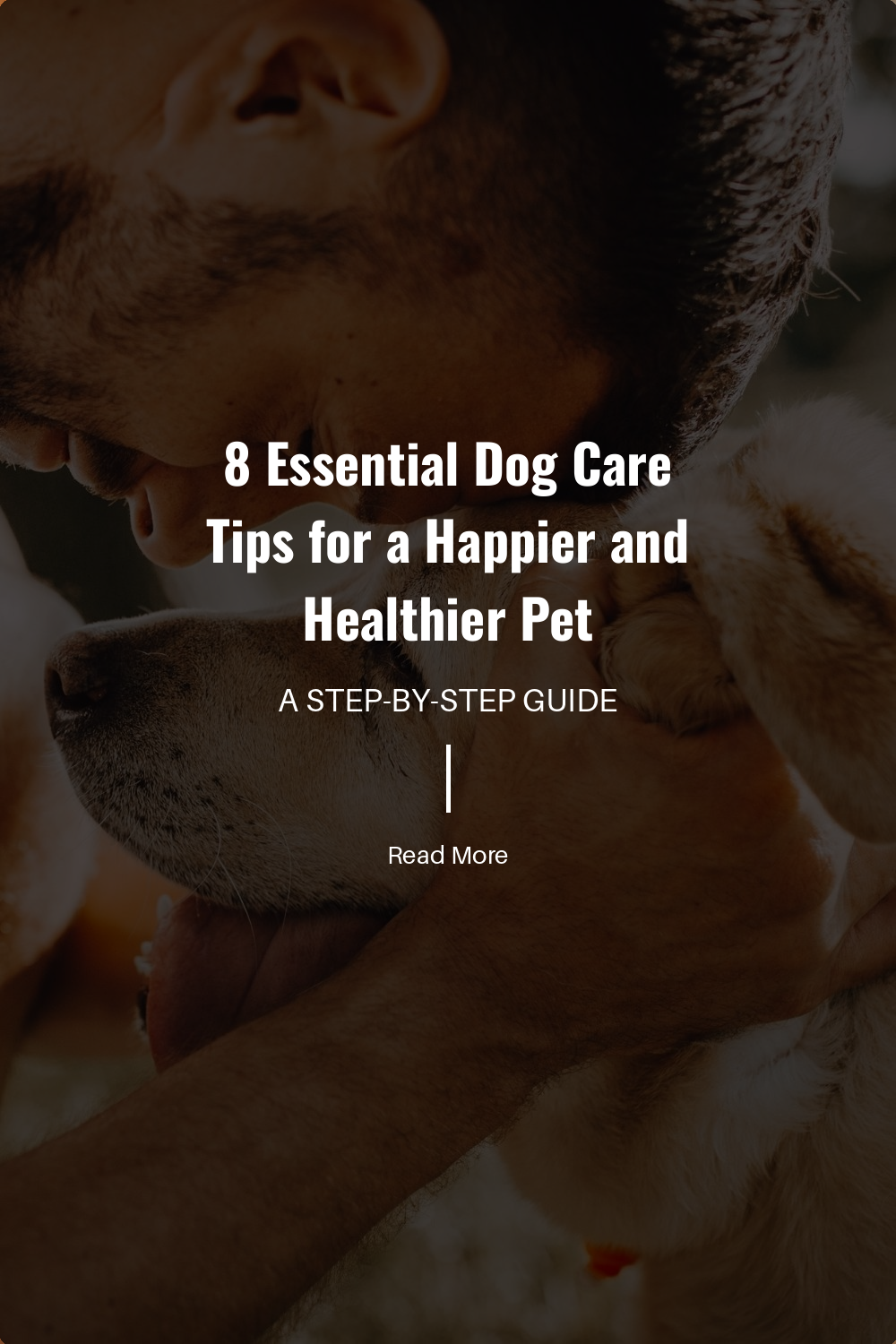Dog safety tips are crucial for every pet owner to ensure a happy and healthy life for their furry friends. Whether you have a playful puppy or a wise old dog, knowing these essential dog safety tips can help prevent accidents and injuries. From creating a safe home environment to managing outdoor adventures, these tips cover everything you need to keep your dog safe.
Many pet owners might overlook the importance of basic safety measures. However, learning and implementing these dog safety tips can make a world of difference in your dog’s well-being. This article offers 14 practical and easy-to-follow tips that focus on common hazards, proper training techniques, and essential gear that can protect your canine companion.
Don’t let your dog become another sad statistic. With these dog safety tips, you can take proactive steps to ensure your pet stays out of harm’s way. Join us in exploring these essential insights that every responsible dog owner should know to provide a safe and secure life for their beloved pets.
Creating a Safe Home Environment

Creating a dog-friendly home takes some effort, but it’s worth it for your pet’s safety. Start by removing hazards that could harm your furry friend. For example, many common plants can be toxic to dogs. Make sure to research which plants are safe and remove any harmful ones from your home.
Next, keep sharp objects and loose wires out of reach. Dogs are naturally curious and may chew on items that could hurt them. Store knives, scissors, and other sharp tools in cabinets or drawers. Similarly, keep electrical cords secured and organized to prevent your dog from chewing on them.
It’s essential to store medicines and chemicals properly. Always put medications and cleaning supplies in cabinets that a dog can’t access. If your dog accidentally ingests something toxic, it could lead to serious health issues.
Gates can be incredibly helpful for keeping your dog away from areas that can pose danger. Using baby gates allows you to block off stairs or rooms that might have hazards. This is one of the best dog safety tips to create a secure area for your pet.
Lastly, regularly check your home for any potential risks. A quick inspection can help you identify and eliminate dangers before they become a problem. By taking these steps, you can create a safe and welcoming environment for your beloved dog.
For added security against fleas and ticks, consider a reliable dog flea and tick treatment here and a dog flea comb here. Keeping your dog protected from pests is another crucial aspect of home safety.
Proper Use of Leashes and Harnesses
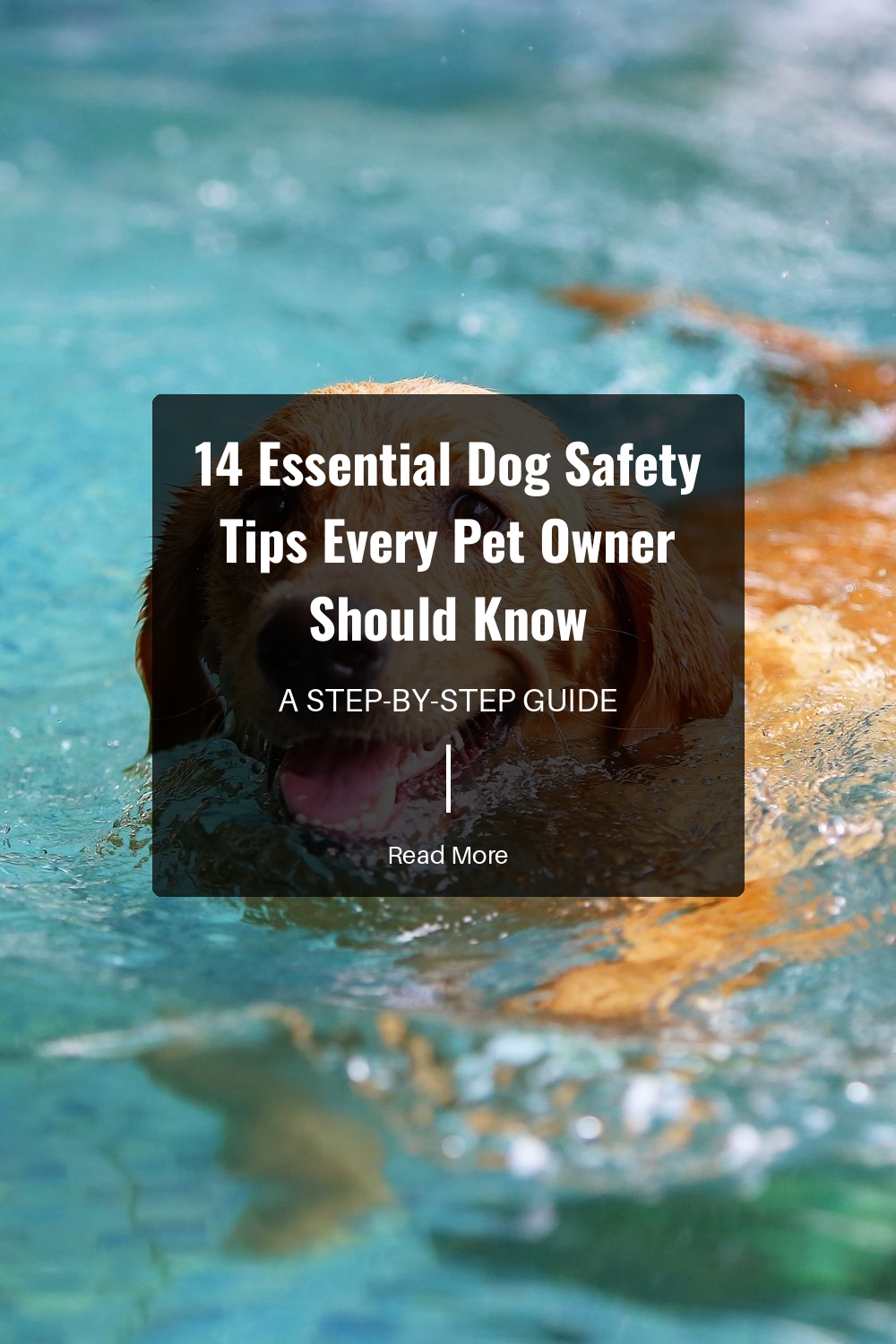
Leashes and harnesses are crucial for keeping your dog safe during outdoor adventures. Choosing the right equipment can prevent accidents and help you maintain control. Always make sure that the leash and harness fit properly. A comfortable fit allows your dog to move freely while you have control over their movements.
When walking your dog, avoid using retractable leashes in crowded areas. These types of leashes can extend too far, making it difficult to control your dog if they become excited or distracted. In busy settings, stick to a standard leash that gives you better control and keeps your pet closer. This is one of the key dog safety tips every owner should remember.
In addition, inspect your leash and harness regularly for any signs of wear and tear. Frayed leashes or broken clasps can lead to unexpected escapes. You want to ensure that every piece of equipment is in tip-top shape before heading out.
While it’s important to focus on safety, don’t ignore comfort. An uncomfortable harness might cause your dog to resist wearing it. Look for options that distribute pressure evenly and prevent chafing. Investing in a good harness can make all the difference in a safe and enjoyable outing.
Moreover, consider using a dog flea and tick treatment before outdoor adventures, especially in areas where these pests are common. Keeping your dog protected contributes to their overall safety and health. Always be prepared and keep your dog’s safety in mind when heading outside.
Identification Tags and Microchipping

Identification tags are a simple yet crucial aspect of dog safety tips that every pet owner should follow. Make sure your dog always wears an ID tag with your contact information. This includes your name, phone number, and any other relevant details. If your dog gets lost, this small step can make a huge difference in helping to reunite you quickly.
Microchipping provides an additional layer of security. It’s a quick and straightforward procedure performed by a veterinarian. The microchip, which is about the size of a grain of rice, is injected under your dog’s skin. If your dog goes missing, animal shelters and veterinarians can scan the microchip to access your contact details. This non-invasive solution significantly increases the chances of bringing your pet home.
Benefits of Identification Tags and Microchipping
- Immediate Identification: If someone finds your dog, they can contact you right away.
- Permanent Solution: Unlike collars, microchips won’t fall off or get lost.
- Peace of Mind: Knowing your dog has identification makes outings less stressful.
Remember, in addition to these safety measures, regular vet visits keep your dog healthy. If your pet is at risk for fleas and ticks, consider using a safe dog flea and tick treatment. Keeping your pet protected contributes to overall safety.
By following these dog safety tips, you increase the likelihood of a happy reunion with your furry friend if they wander off.
Safe Car Travel

When traveling with your furry friend, it’s essential to ensure their safety in the car. One of the best ways to protect your dog is by using a seatbelt harness or a secured crate. These devices help keep your dog in place, reducing the risk of injury during sudden stops or accidents. Look for a sturdy harness that is specifically designed for car travel, as these often come with a seatbelt attachment to keep your pup safe.
Another critical aspect of car safety is avoiding the classic scene of dogs sticking their heads out of the window. While it may look cute, this behavior can lead to serious injuries. Flying debris, sudden turns, and even jumping out of the vehicle are genuine dangers. Instead, make sure your dog is safely secured, and allow them to enjoy the sights safely from inside the vehicle.
It’s also a good idea to take regular breaks during long trips. This allows your dog to stretch, relieve themselves, and stay comfortable. Make sure to keep a leash handy for these breaks, as your dog may become excited and want to explore their surroundings.
Lastly, if you’re planning any outdoor activities during your journey, it’s essential to treat your dog for fleas and ticks beforehand. Products like dog flea and tick treatment can help keep these pests at bay, ensuring your dog enjoys the ride as much as you do. Remember, their comfort and safety should always come first!
Vaccinations and Regular Vet Visits

Keeping your dog’s vaccinations up to date is crucial for their health and safety. Vaccines protect your furry friend from serious illnesses that can spread easily among pets. Common vaccinations include those for rabies, distemper, and parvovirus. Always consult your veterinarian about which vaccinations are best for your dog based on their age, breed, and lifestyle.
Regular vet visits play a key role in maintaining your dog’s health. During these check-ups, your vet can perform important tests to catch health problems early. This helps you address any issues before they become serious. Your veterinarian will also check for fleas and ticks, which can be harmful if not managed properly. Using a reliable dog flea and tick treatment can prevent infestations and keep your pet comfortable.
In addition, routine vet visits allow you to discuss nutrition and exercise, helping you tailor a plan that suits your dog’s needs. Don’t forget to keep an eye on your pet’s dental health as well. Regular dental care can prevent tooth decay and gum disease, which are often overlooked.
Ultimately, staying on top of vaccinations and annual vet visits is one of the best dog safety tips to ensure a long, happy, and healthy life for your canine companion.
Heat and Cold Weather Precautions
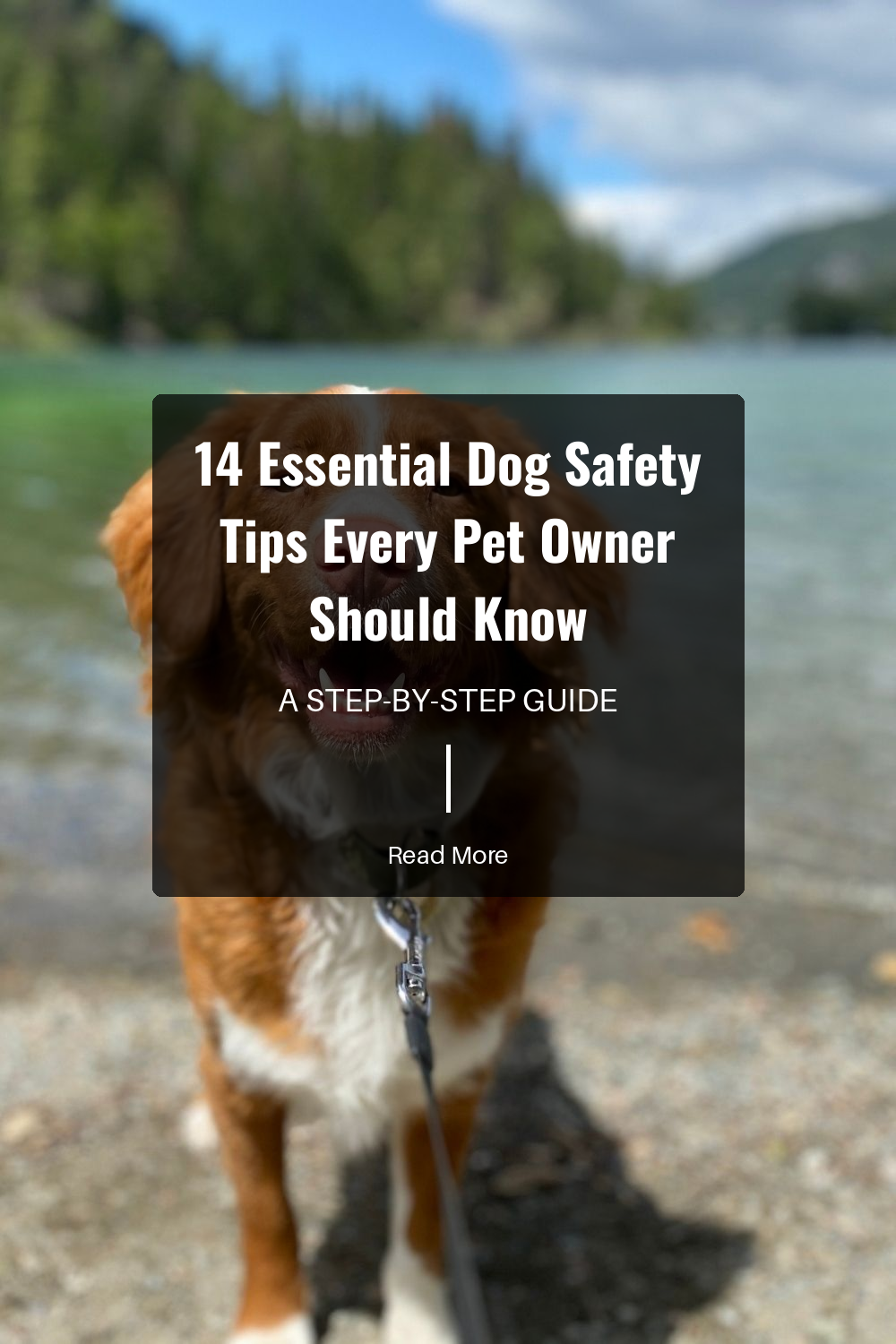
As a responsible pet owner, it’s essential to take extra care of your dog during hot and cold weather. Simply by following some key dog safety tips, you can help ensure your furry friend stays comfortable and healthy.
Hot Weather Precautions
In the summer, the inside of a parked car can heat up very quickly. Even on a mild day, leaving your dog in the car can lead to heat exhaustion or a heat stroke. Always take your dog with you if you have to leave.
Make sure to provide plenty of fresh water and shade when your dog is outside. Dogs can overheat easily, so it’s best to plan walks during the cooler parts of the day, like early morning or late evening. A portable water bowl can be handy to keep your dog hydrated while you’re out and about.
Cold Weather Precautions
When winter arrives, it’s important to limit your dog’s time outside. Dogs can get cold just like humans, and certain breeds are more susceptible to the cold. A warm dog coat can help keep your pet snug during those chilly walks.
Watch for signs of discomfort, such as shivering or whining. If it’s too cold for you, it’s probably too cold for your dog too. Consider using snug booties to protect their paws from ice and snow.
By taking these precautions, you can keep your dog safe in all seasons. Remember, keeping an eye on your pet during extreme weather is a crucial part of responsible pet ownership.
Safe Toys and Chew Items

When choosing toys for your dog, safety should always come first. Opt for durable, non-toxic toys made from high-quality materials. This ensures that they can withstand rough play without breaking apart. Chew toys are especially important, as they help keep your dog’s teeth clean while preventing boredom. Look for items that are designed specifically for your dog’s size and chewing habits.
Regularly check your dog’s toys for signs of wear and tear. If you notice any fraying, cracks, or pieces coming off, toss those toys out immediately. Ingestion of small parts can lead to choking hazards or intestinal blockages. While playing, always supervise your dog to make sure they’re using their toys safely.
When it comes to choosing chew items, avoid those that are small enough to be swallowed easily. Balls and toys with squeakers can be fun, but ensure they are the right size for your dog. You should also consider interactive toys that can stimulate your dog’s mind. These toys keep your pet engaged and help reduce destructive behaviors around the house.
Lastly, if you are looking for a way to make your dog playtime even safer, consider using a flea and tick treatment like this one. Keeping your dog free from fleas and ticks not only contributes to their health but also helps in ensuring a more enjoyable playtime experience for both of you.
Always keep the health and safety of your furry friend in mind with every toy you choose.
Training for Obedience

Training your dog in basic obedience is vital for their safety and your peace of mind. Commands like “sit,” “stay,” and “come” can be lifesavers in potentially dangerous situations. For example, if your dog is about to run into a busy street, a command to “stay” can keep them safe. This training helps you maintain control over your dog, reducing the risk of accidents.
Importance of Basic Commands
Basic commands are not just about discipline; they are essential dog safety tips that can genuinely prevent mishaps. Teaching your dog to “come” when called can prevent them from wandering off or getting into trouble. This simple command can ensure they stay within safe boundaries, especially in public places or during outdoor activities.
How to Start Obedience Training
-
Start Early: Begin your training as soon as you bring your dog home. Puppies are more receptive to learning, but older dogs can also learn new tricks.
-
Keep Sessions Short: Training sessions should last 5-10 minutes. Shorter sessions help maintain your dog’s attention and eagerness to learn.
-
Use Positive Reinforcement: Reward your dog with treats or praise when they follow commands correctly. This encourages them to repeat the behavior.
-
Be Consistent: Always use the same command for specific actions. Consistency helps your dog understand what you want them to do.
Training your dog in basic obedience is one of the most effective dog safety tips you can use. Not only does it enhance your bond, but it also ensures a safer environment for your furry friend. Investing time into this training now can prevent many unpleasant situations in the future. For added protection against outdoor dangers, consider using a dog flea and tick treatment to keep your pet safe while enjoying their outdoor adventures.
Socialization with Other Dogs

Socializing your dog is crucial for ensuring good behavior and safety. Proper socialization helps prevent aggression and fear, creating a well-adjusted pet that enjoys interacting with others. Start by exposing your dog to a variety of environments, people, and other dogs in a controlled manner.
When introducing your dog to new canine friends, consider the following tips:
Gradual Introductions
Begin by allowing your dog to observe other dogs from a distance. Gradually decrease the space between them as they become more comfortable. Use positive reinforcement techniques, like treats or praise, to encourage calm behavior during these encounters.
Group Classes
Enrolling your dog in obedience classes is an excellent way to foster social skills. These classes allow for controlled interactions with other dogs under the guidance of a professional. This setting helps your pet learn proper greetings and responses, reducing the chances of anxiety or aggression.
Monitor Body Language
Understanding your dog’s body language is vital. Look for signs of stress or discomfort, such as tucked tails or stiff postures. If you notice these signs, allow your dog to take a break and retreat from the situation.
Encourage playdates with trusted dogs that you know are friendly and well-behaved. This helps your dog learn appropriate play behaviors. Remember, regular socialization is one of the most effective dog safety tips to promote positive interactions both at home and in public settings.
Additionally, ensure your dog’s health is in check. Keep up with flea and tick treatments, as these can lead to discomfort and change their behavior. For effective protection, consider options like dog flea and tick treatment or use a dog flea comb to keep them feeling great while socializing.
Handling Food Hazards

Many human foods can be harmful to dogs, so it’s crucial to know what’s safe. For instance, chocolate is a popular treat for people but can be very dangerous for dogs. It contains theobromine, which dogs cannot metabolize effectively. Similarly, grapes and raisins can cause serious kidney damage in pets, even in small amounts. Always keep these foods out of reach.
When it comes to dog safety tips, be mindful of what you leave on countertops or tables. Some dogs are talented at stealing food, and a moment of inattention can lead to a vet visit. Securely store all human food in cabinets or containers that your dog cannot access.
Safe Food Alternatives
Instead of giving your dog human food, consider those pet-safe treats. There are excellent options like carrots and apples. Both can be great snacks and are safe for your furry friend. Enrich your dog’s diet with approved snacks to avoid potential toxins.
Be Proactive
Make sure everyone in your household knows which foods are not safe for dogs. Educating family and friends can help prevent accidents when they are watching your pet. You may also want to use a dog flea comb regularly to check for unwanted pests during your playtime.
Keeping your home safe means being aware of these food hazards. Knowing what’s harmful can save your dog’s life and help you enjoy many happy, healthy years together. Stay alert and make good choices for your beloved pet.
Outdoor Supervision

Always keep an eye on your dog when they are outside. Even if you have a fenced-in yard, you should regularly check for any gaps or weaknesses. Dogs can be sneaky, and they may find a way out when you least expect it.
A secure fence is important, but it’s not a complete guarantee of safety. Check for holes where your dog might squeeze through, or areas where the ground is soft and may allow them to dig under. Make sure the fence is tall enough, too, especially for larger breeds that might try to jump over.
While your dog plays outdoors, it’s crucial to keep them away from neighbors' yards, public pathways, or any areas where they could encounter other animals. Supervision not only protects your pet from escaping but also prevents them from running into trouble with other animals.
Be mindful of the weather, as well. On hot days, make sure they have access to shade and plenty of water. When the weather turns bad, bring your dog inside to avoid unnecessary stress. You might also consider using a dog flea and tick treatment to keep them safe from pests while they enjoy the outdoors. Keeping up with their grooming routine with a dog flea comb can help you catch ticks or fleas early, ensuring a happy and healthy playtime outside.
Remember, outdoor supervision is one of the essential dog safety tips that all pet owners should practice for their furry friends.
Avoiding Water Hazards
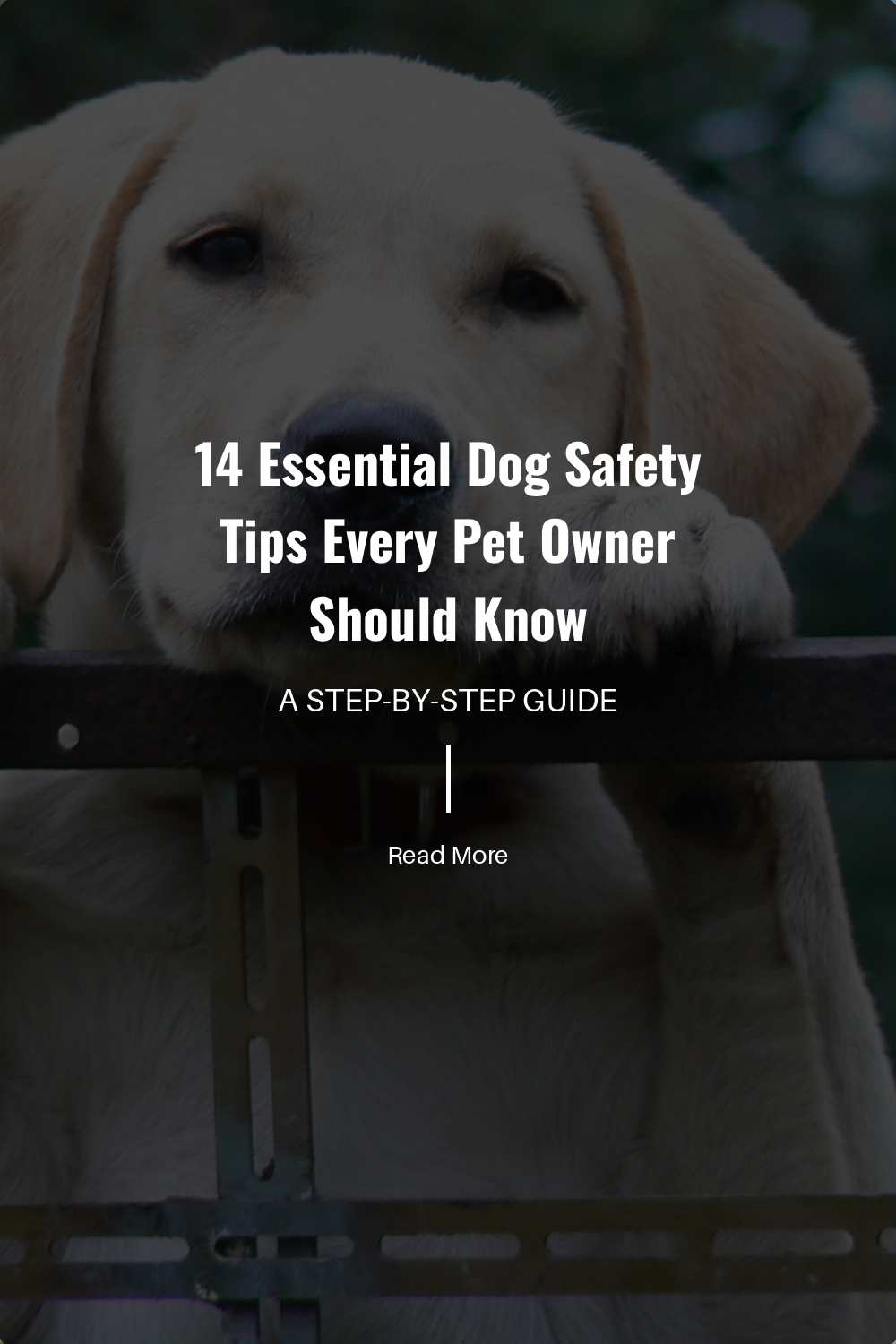
When taking your dog near water, always prioritize their safety. Not all dogs are natural swimmers. Some breeds struggle in the water, so it’s crucial to keep an eye on them during playtimes. Whether you’re at a pool, lake, or ocean, supervising water activities ensures your furry friend’s safety.
Use Life Jackets
Consider investing in a dog life jacket, especially for boating trips. These jackets can provide extra support for dogs who may tire easily while swimming. Look for jackets that fit snugly and have easy-release buckles. It’s also wise to introduce your dog to water gradually. Start in shallow areas where they can feel comfortable and confident before venturing into deeper water.
Recognize Signs of Distress
Pay attention to your dog’s behavior in the water. If they seem anxious or begin to struggle, it’s important to act quickly. Look for signs such as excessive paddling, barking, or panicking. If you notice these behaviors, calmly guide them back to safety.
With these dog safety tips, you can enjoy your time at the water while ensuring your pet stays safe. Don’t forget to check for any flea and tick problems after your fun-filled day—products like dog flea and tick treatment can help keep your dog protected from pests that may lurk near water.
Fire Safety

Fire safety is crucial for every pet owner. Dogs are naturally curious and can get too close to open flames, candles, or BBQ grills. These items can pose serious risks not only to your dog but also to your home. Always keep your dog at a safe distance from these hazards.
When using candles or grilling outdoors, it’s best to create a barrier. Consider using pet gates to keep your dog away from areas where these items are present. You can also opt for flameless candles as a safe alternative to traditional candles. They give the same effect without the risk of an open flame or potential burns.
Moreover, having an evacuation plan in place that includes your furry friend is vital. In case of a fire or other emergencies, it’s essential to know how you’ll safely evacuate your dog. Practice getting your dog to their designated safe area quickly. Keep a leash near your exit to grab on your way out.
Additionally, make sure your dog is familiar with this routine. This will help reduce stress during a real emergency. Knowing these dog safety tips can protect your pet and ensure their well-being in unexpected situations.
Using Pet-Friendly Lawn and Garden Products
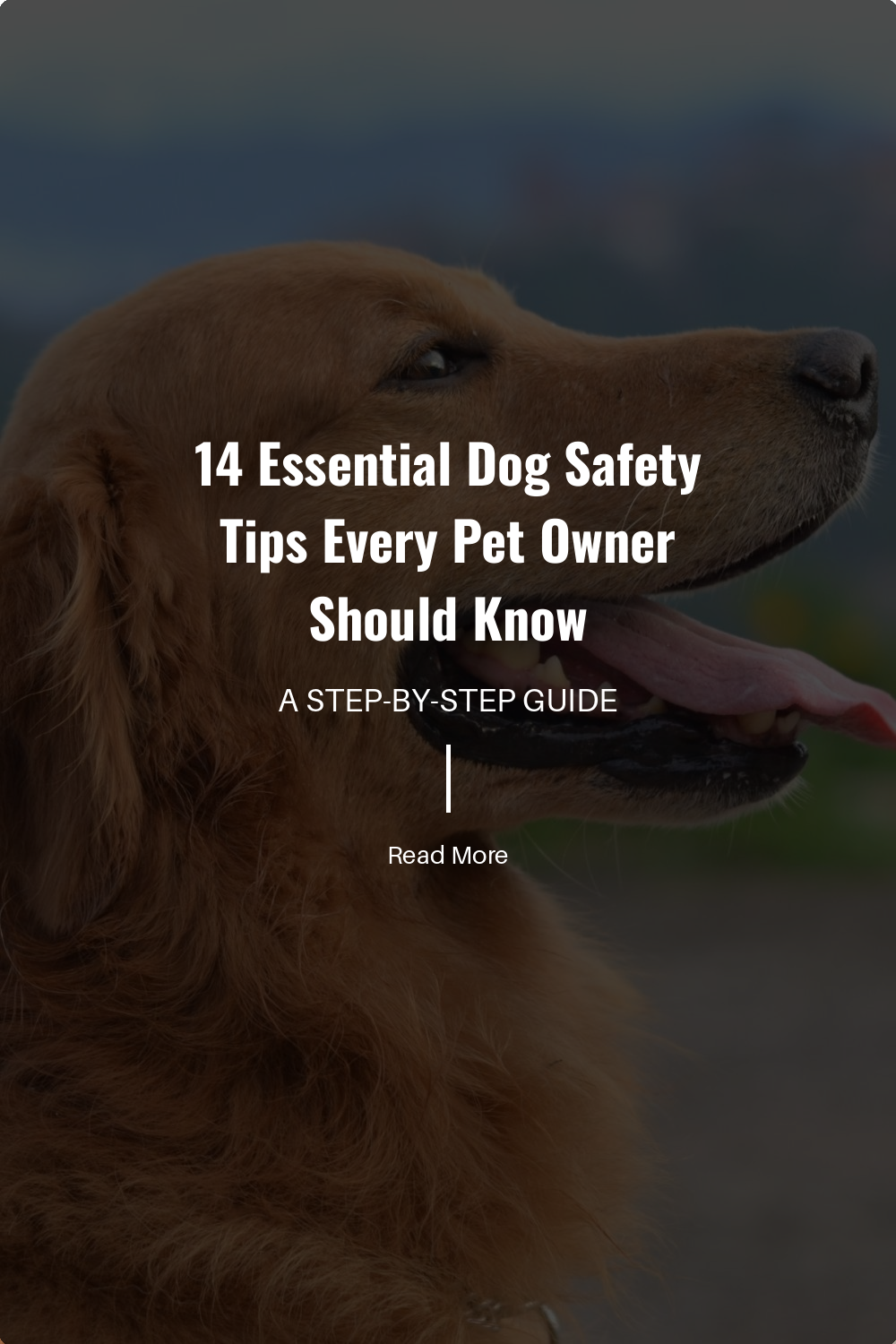
When caring for your dog, it’s essential to consider the safety of your lawn and garden. Many common products may pose serious risks to your pet. To keep your furry friend safe, always opt for pet-safe fertilizers and pesticides. These options are specially formulated to avoid harmful chemicals that can affect your dog’s health.
Choosing Safe Plants
Along with selecting the right products, be mindful of the plants you include in your garden. Some plants are toxic to dogs. Always check that the plants you choose are non-toxic alternatives. Safe choices include lavender, rosemary, and certain herbs like basil and cilantro. Avoid plants such as azaleas, lilies, and oleander, which can be dangerous if ingested.
Cocoa Mulch Caution
One specific product to steer clear of is cocoa mulch. While it may be an appealing option for landscape aesthetics, cocoa mulch contains theobromine, which is toxic to dogs, similar to chocolate. If your dog sniffs or ingests cocoa mulch, it may lead to serious health issues. Think of other mulch options like cedar or pine, which are safer choices for your yard.
By being vigilant about the products and plants you use, you can create a safe environment for your beloved pet. Protect your dog by choosing wisely and always reading labels to ensure they are pet-friendly. For added safety, consider using a dog flea and tick treatment to keep your dog healthy and happy while enjoying the great outdoors.
Bottomline
In conclusion, keeping your dog safe is a top priority for every pet owner. By following these essential dog safety tips, you can create a secure environment for your furry friend. From ensuring proper identification and safe travel, to providing regular vet check-ups and training, each tip plays a vital role in preventing accidents and injuries.
Remember, these dog safety tips are not just guidelines; they are commitments to your dog’s well-being. Take action today to implement these practices and secure a happier, healthier life for your beloved pet. Your dog depends on you for protection and care, so let these dog safety tips guide you in being the responsible pet owner your dog deserves.


